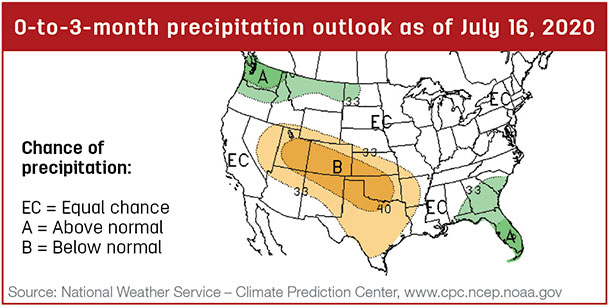During these uncertain times, due to the coronavirus and challenging weather conditions, it is imperative to make well-informed decisions and manage operations using sound strategies for both the short- and long-term success of the operation.
Regardless of the situation, there are some factors that are always important to success in cow-calf operations. Four of these key factors are listed below.
- Because of the critical role that forages play in cow-calf operations, sound grazing strategies and forage management practices are vital for operational success.
- Feeding and supplementation decisions should be carefully evaluated to ensure they are cost-effective and are consistent with animal health, welfare, reproductive performance and production goals.
- Good recordkeeping is needed to make informed decisions.
- Input costs should be evaluated based on their potential return on investment, instead of just the desire to cut costs.

Those in drought areas should be working their drought management plan, and others should be thinking about their winter feeding plan or their drought plan, if dry conditions occur in their area. In most droughts, early reductions in herd size are best from a financial standpoint.
While prices have been lower for calves, feeder cattle and fat cattle, prices for cull cows have remained at or above year-ago levels. Extension fact sheets on herd reduction strategies and other management considerations can be found on animal science department websites at Kansas State, New Mexico State, Oklahoma State and Texas A&M.
Additionally, Dr. Jason Smith and I recently put together a paper titled, “Management and economic considerations for beef cow-calf producers during challenging markets or adverse weather conditions” that can be found online (Beef Cattle).
During drought times, the use of a sacrifice pasture can be extremely helpful to prevent future damage to range or pasture productivity. Overgrazing will result in slower growth and less forage production when conditions improve. Instead of overgrazing all or most of the operation, confining cattle to one pasture and feeding them there will help preserve forage stands.
Hay testing is especially important during a drought to prevent over or underfeeding. Visit with a nutritionist before sending in samples to get a lab recommendation and identify the most appropriate tests for the sample. ![]()

-
Jason Banta
- Associate Professor and Extension Beef Cattle Specialist
- Texas A&M University
- Email Jason Banta








